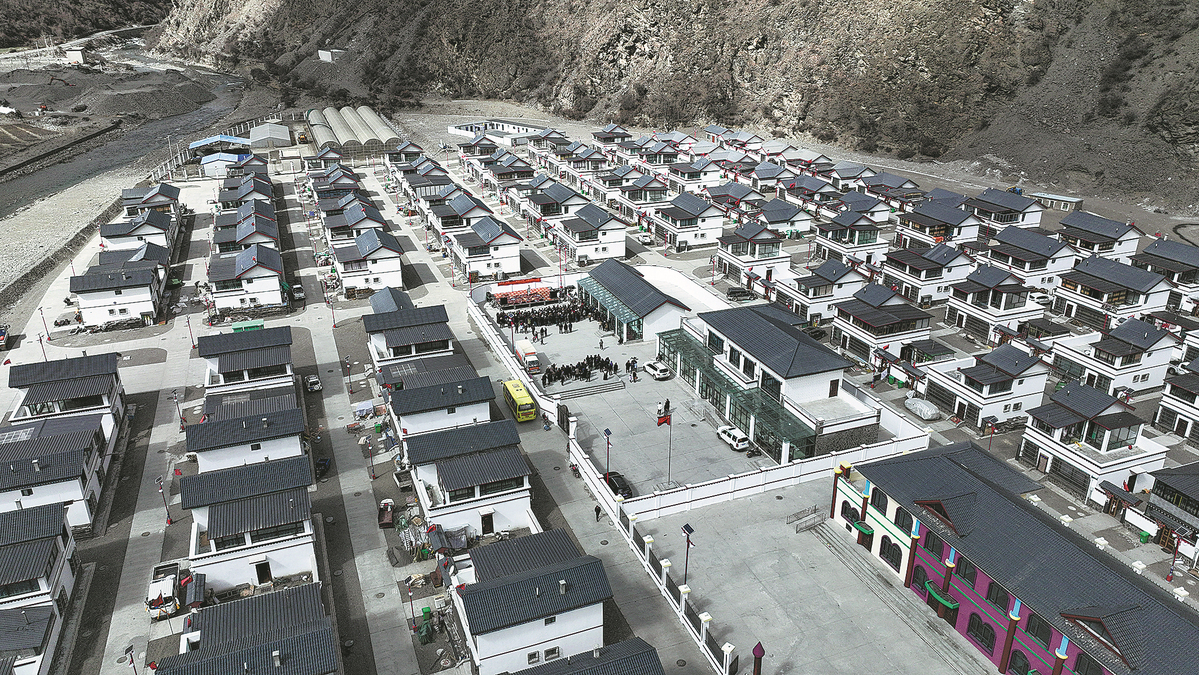Better living conditions secure borders with India
By CUI JIA | China Daily | Updated: 2023-03-15 08:52
An aerial photo taken on Feb 15 shows a relocated village in Doyul Lhoba ethnic township, Lhunze county, the Tibet autonomous region. JIGME DORJE/XINHUA
Increased infrastructure in rural Tibet brings benefits to people, nation
The population is growing in the border areas of the Tibet autonomous region, with improved living conditions and road network being a contributing factor, resulting in a safer and more stable border and safeguarding national security, according to a National People's Congress deputy.
Tashi Gyaltsan, an NPC deputy of the Tibet autonomous region and head of Doyul Lhoba ethnic township in Lhunze county, said infrastructure in all 28 villages in the county near the border between China and India has been modernized, benefiting more than 6,000 people.
"Those villages are now connected by roads in good condition. Furthermore, the road network in the border area is expected to be further improved in the future," said Tashi Gyaltsan, a member of the Lhoba ethnic group.
Improved transport infrastructure in recent years has paved the way for development, and new roads have allowed people to get to townships and villages in border areas more conveniently throughout the year.
"In the past, Yulmed township, surrounded by mountains, would be cut off by heavy snow in the winter for months. After the completion of a road by the end of 2020, the problem has been solved. What's more, an airport in Lhunze is now operational, which will surely boost the development of the county," Tashi Gyaltsan said.
All three villages of Doyul Lhoba ethnic township have running tap water and electricity, and infrastructure such as roads and the internet. People's living standards have been significantly improved in all aspects, he said.
The improved living conditions have attracted more people to live in villages and settlements in border areas, and the steady increase in population has been key to maintaining stability, Tashi Gyaltsan, said.
"The villagers all understand the importance of safeguarding national security, as well as their roles in keeping the border areas stable. I am often touched by their words and actions on border protection when I visit them," he said. "The changes in Lhunze county have also taken place in other border areas in Tibet," he added.
To make the border areas more stable and help them thrive, the region introduced preferential policies in 2022 to assist people moving to 48 settlements, according to the region's government work report published in January.
The population in border areas has seen an increase of 10.5 percent in the past five years, and by 2022, the length of the road network in such areas was 3.7 times what it was in 2018, according to the report.
By stepping up efforts in infrastructure construction in border areas and developing suitable industries in those areas this year, the growth in economic development and people's incomes is expected to exceed the regional average, the report added.
The population is growing in the border areas of the Tibet autonomous region, with improved living conditions and road network being a contributing factor, resulting in a safer and more stable border and safeguarding national security, according to a National People's Congress deputy.

www.chinadaily.com.cn






